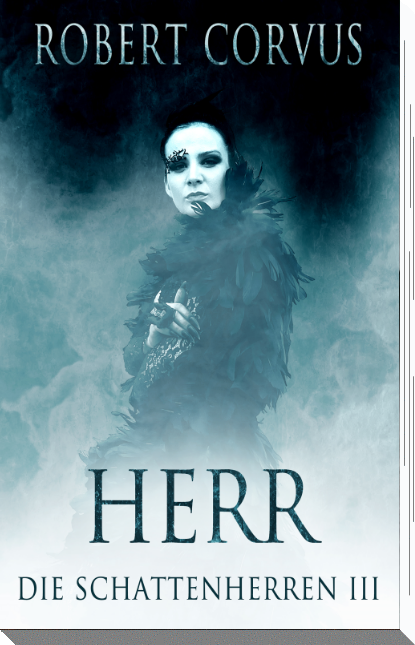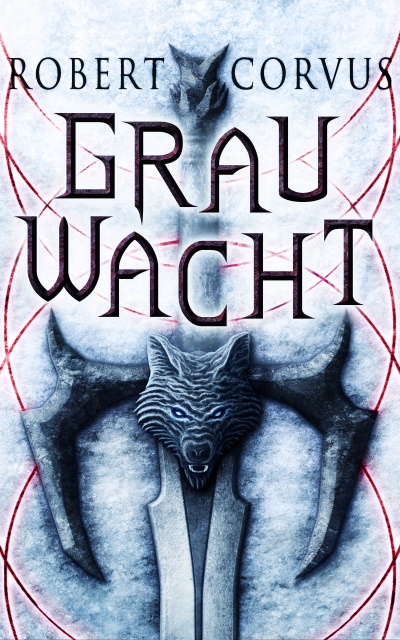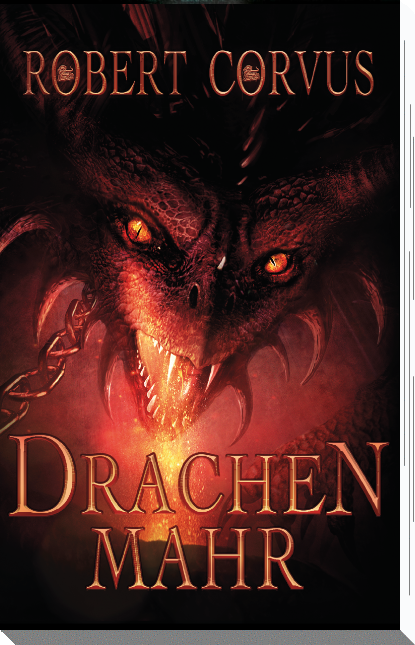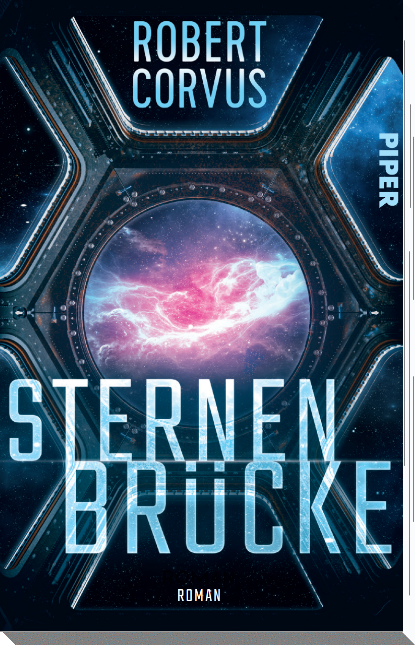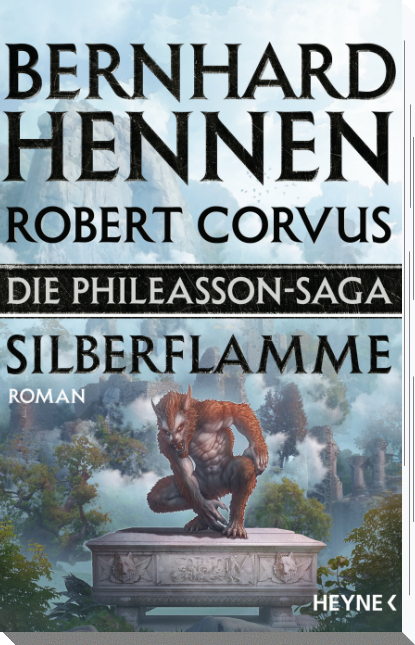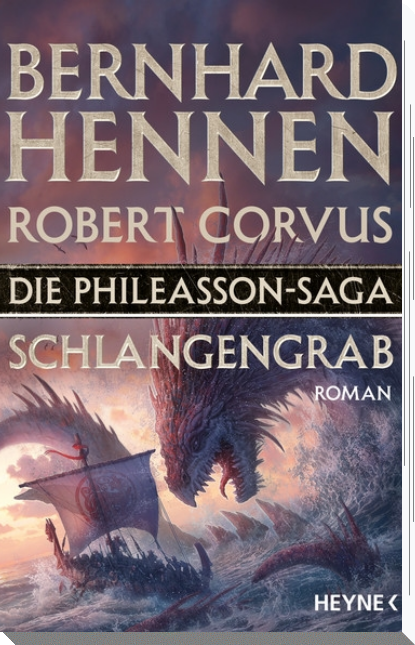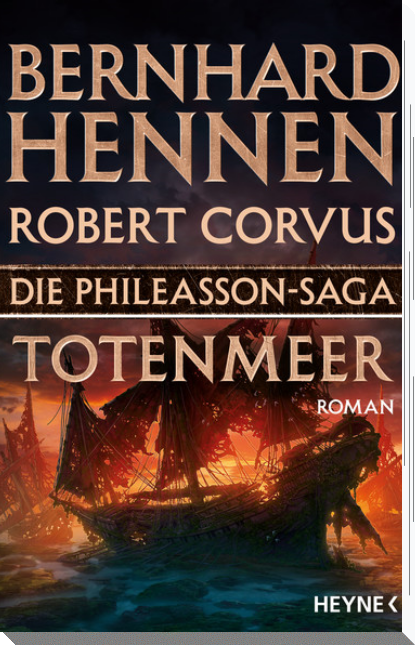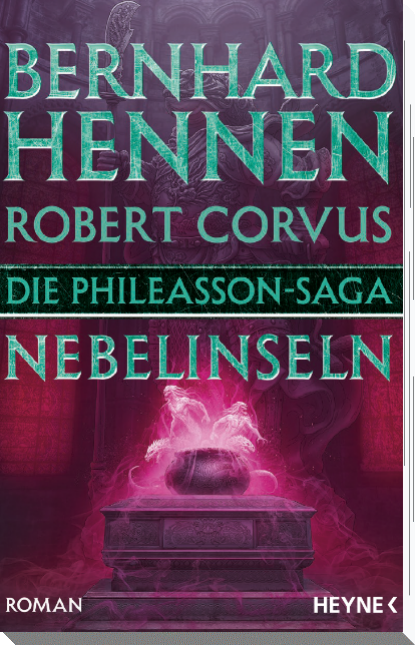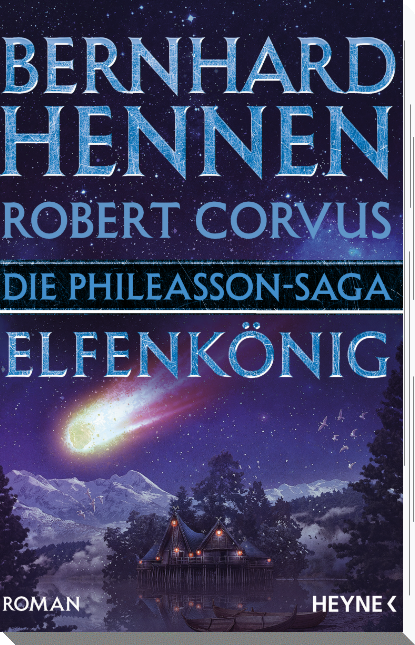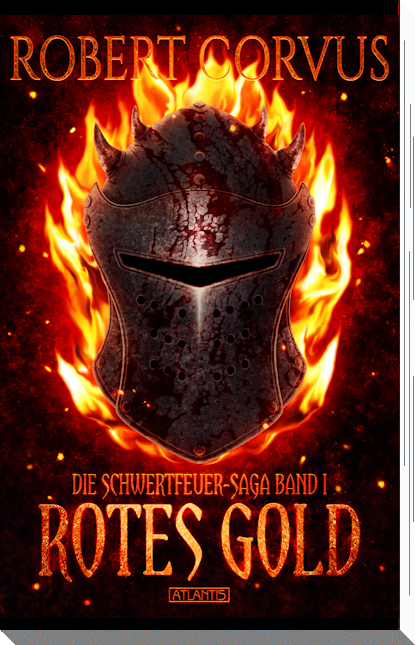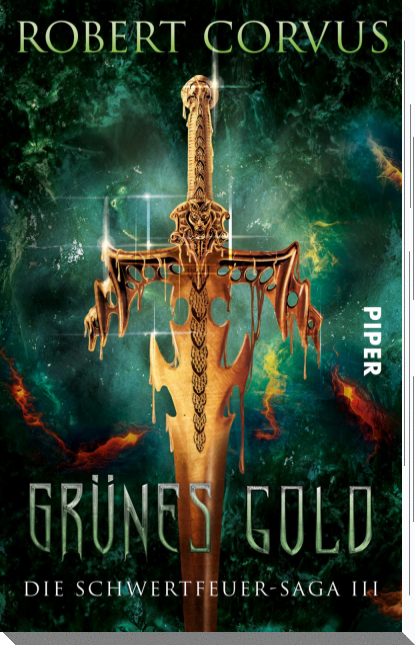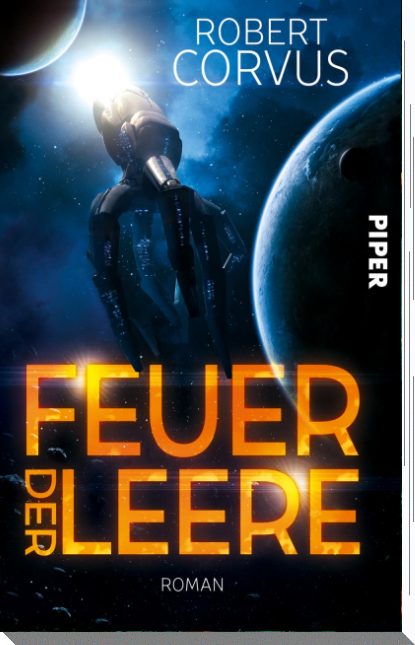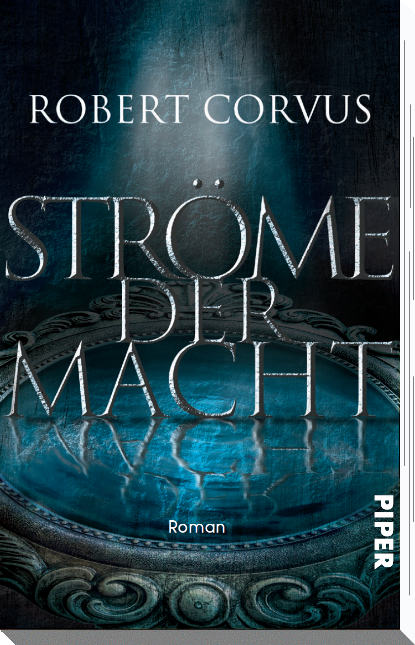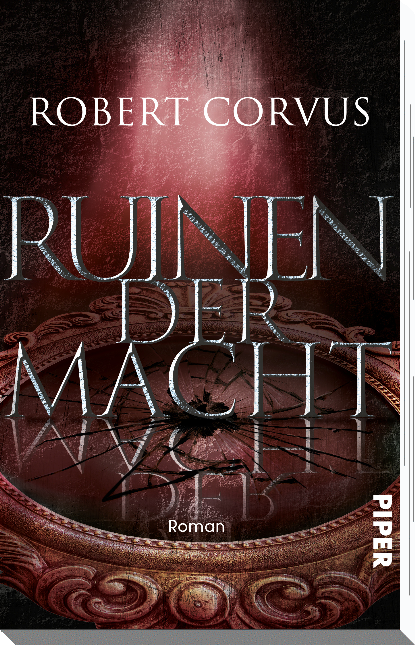The novels of Robert Corvus

My novels are published in German language only – so far, at least.
This page offers an overview. Clicking the links will transfer to detail pages, which are in German, but also show some graphic material.
As an appetizer, my English short story Eutopia is available as Kindle eBook on Amazon.
The Shadow Lords
Immortal cruelty.
The largest empire of the world, Ondrien, the north shadow land, is ruled by the shadow lords. These are extremely powerful magicians, which rebelled against the gods – successfully. They defy the rules of nature and become immortal, but for a single vulnerability: silver.
The cruel ruling of the shadow lords in part is due to the fact that life energy is required to cast magic, including the magic that keeps them alive. A magician can use his own life energy (limited and unhealthy), or the life energy of others. In the empire, life energy is collected from the population in temples and cathedrals, where emotions like hate and greed are preached and the shadow lords are worshipped.
The first novel, Foe, follows Helion, a paladin, who joins the fight against the shadow lords to prevent them from taking the last big silver mine. His counterpart is Lisanne, a shadow duchess (which is the power level of a demi goddess) and the most beautiful woman ever walking the world. Her beauty is so immense that it demands immediate submission from almost everybody who lays an eye on her.
To kill Lisanne, Helion has to ally with Modranel, who is known to be the most vicious human magician and student of the lore of the shadow lords, but claims now to have changed sides and willing to fight the shadow lords.
In Pawn, set 50 years later, we learn that Lisanne disappeared and now is searched by the shadow king. The shadow king sends Bren, a general who has no more enemies left to fight but still wants to earn immortality. Bren leads his expedition into the Fog of Souls, a barrier considered impenetrable. There he discovers a strange island, where Lisanne is worshipped as a goddess ...
In Lord, a new shadow king orders Bren and Lisanne to smash a rebellion in the south. Despite their mutual hate, they have no option to directly attack each other, as this would break the law of the shadow king, who holds power over both of them. This is because when made a shadow lord, the heart is extracted from the body and given to the shadow king, who stores all of these hearts in his castle. By stabbing the heart, he can kill every shadow lord, including Lisanne and Bren.
But Lisanne discovers that Bren's love is vulnerable ...
Shadow Cult
One night.
One palace.
One fall into darkness.
Set in the same universe as The Shadow Lords, this is a stand-alone novel.
The whole plot plays in 1 night, and in 1 place: the rainbow palace of the Oracle of Æterna. This Oracle grants an unveiled prophecy to the delegation which presents the most impressive gift at the end of the night.
There are 9 delegations. 8 of them are (more or less) loyal to the gods. The final one is the delegation of the shadow cult, worshipping not the gods, but the shadow lords (and ultimately the Darkness itself).
Tynay is an adepta of the shadow cult. She is intended to die at dusk, when she is ordered to wake a shadow lady which shall lead the delegation. However, through an accident, another member of the delegation is killed instead of Tynay.
Tynay finds herself in a situation where all other 8 delegations are hostile to hers, and where even in her delegation the other 8 members think that she should be dead already. She realizes that there is only one potential ally powerful enough to bring her through the night alive: Darkness itself. A rush down into the darkest corners of a human soul begins …
Two other girls join Tynay (or are subdued by her …). Bottom line, Shadow Cult is an extremely dark fantasy story centered around 3 really, really bad girls.
Grayguard
Fear the light!
A world where a day lasts a lifetime.
Due to the very slow movement of the terminator, »day« and »night« are perceived as places, not times.
Following an ancient covenant, humans have to stay in the night. This is a harsh place, extremely cold, coated in ice. To survive, warm spots have to be found: hot wells, volcanoes, or the strange »refugios« where the »plexo«, kind of a plat, provides magical living conditions …
The day belongs to the sasseks, an amphibious species. In the center of the day, where the sun stands highest, the oceans boil.
There are habitable places in this world: 11 metropolises, where ghosts live which serve the inhabitants. Here, food is plenty and temperature is always pleasant. But these metropolises also have to be cleared for the other species when dusk/dawn falls upon them. It is the task of the grayguard to guarantee that this covenant is obeyed by both parties.
The story begins when the two moons of this world begin to turn blue – blue being the damned color in the culture of the sasseks, who built a taboo around it. This concerns Nata, a very sophisticated woman who was a scholar before fleeing with Remon into the wild. Remon is a grayguard knight who deserted to have a family with Nata.
After a long time – Remon and Nata now have a daughter – the grayguard finds the couple and insists on Remon to come back and receive his punishment. Nata considers him dead and starts to investigate in the blue moon phenomenon – same as Ssarronn, a sassek who rebels against the strict ethics code of his people.
As the story develops, the riddle of the blue moons gets solved, but leads to further questions ...
Dragon's Nightmare
Honor the Dragon!
Imagine a Dragon, so huge that he fills the nave of a cathedral, where he is bound with silver chains.
Each dusk, the children of the Dragon swarm over the city, bringing nightmares to the people who live there. And they feed on these nightmares.
Each dawn, they return to the cathedral, and the Dragon feeds on his own children.
There are clerics in the cathedral, who can step into the Dragon's dreams and pull things out of these dreams into reality. As the city is isolated and has limited supply of food, it depends desperately on the food to be pulled out of the Dragon's dream.
So the population suffers from the Dragon because of the nightmares, and it depends on the Dragon at the same time.
Sometimes, the clerics shut the doors of the cathedral, and then they pull quite different things from the Dragon's dream ...
The story follows Zarria Machon, a young lady, who is a lieutenant from the city guard who investigates a murder case. Through this she solves the riddle why the Dragon came into the cathedral in the first place, why he obeys the clerics, etc. A chain of riddles ...
Star Bridge
Time does not heal every wound.
Not all pain fades.
But we are more than our pain.
To Yul, a former starship doctor, loneliness is a terminal illness after the death of his wife. Friends and family leave him on the streets of Libreville. Only his dog Pilgrim remains with him.
Can he find his lost love in technical worlds of engineered desire?
The money to get these artificial worlds generated could come from a sublight journey to the terminus of a destroyed star bridge: 146 years in a cryogenic sleep unit. At destination, the only acquaintances left alive will be his shipmates. Among them is Reja, a lively engineer. Can she open a new perspective for Yul?
Also available in a Dutch translation: Sterrenbrug.
The Phileasson Saga
Around Aventuria in 80 weeks.
The Sword Fire Saga
No lord
No god
Only gold
is eternal
The Blades' Rush, a mercenary legion of 5,000 warriors, ranks among the best in the world. It is in league with fire demons; one of the outstanding characters is an "avatar," a human infected with the seed of a fire demon. A homunculus grows out of this seed, a small creature now sitting inside the left shoulder, with its roots gripping around the heart of the human. This avatar is the legion's priest, and also a magician, wielding demonic powers.
At the beginning of the series, the ruler of the legion is killed in battle. His 24 year old daughter, Eivora, tries to hold the legion together. This goes against the strong-minded officers, who are wondering if they could gain more silver by breaking their troops out of the legion and signing contracts on their own.
In addition to this internal power struggle, there are always the enemies the mercenaries are hired to fight against.
In Red Gold, they have to take a city that was never conquered before, guarded by a wall 100 meters high.
In White Gold, they protect a pilgrim on his long journey which is aimed to earn him the throne of a count. This pilgrim is not pious at all; he just wants the throne and for that has to wash off his sins in the eyes of his people. The prime rule of the pilgrimage is that he has to submit himself to the grace of the gods, neither wearing armor nor weapons. But the mercenaries are in league with demons anyway, so they do not care if they are damned by the gods. So they can wear armor and weapons and protect him from the rivals who for sure will try to kill him during the pilgrimage …
In Green Gold, the mercenaries guard the border to a land of deep forests inhabited by cannibals, in which green jade has been found. However, they quickly learn the green shadows host something far more valuable than jade – and strange enemies arise, chimeras of humans and snakes or bears – as if the forest itself would try to fight the intruders off …
People of the Void
The Nothingness burns.
Earth is destroyed, smashed by an asteroid with an iron core, which a hostile power directed into the planet. The last 1 million free humans live in 30 giant spaceships. 29 of those were built by humanity. 1 was not. It was not built by anyone. Instead, it was born: The Squid is a 10-kilometer-long space kraken, who saved the survivors of a human colony by taking them inside its body.
The generations passed, and what the people living aboard the Squid eat, drink, and breathe all comes from the creature’s body. Mutations arise, like tentacles, and even stranger things. 300 of the 30,000 people living on board of the Squid are able to communicate with the ship. They describe this as the Squid »singing in their flesh«. They never would admit they control the ship, or they would rule the inhabitants … They interpret the wish of the Gracious Mother, as they call the Squid, which has become their goddess.
The Squid is the strangest of the 30 ships, but the others are exotic environments, too. People live in zero gravity most of the time, which has grave consequences on architecture (rooms are hollow spheres, with magnetized walls; people use strings and poles to pull through larger rooms). Societies on these ships include a ruling of a central computer (with people wearing implants in their heads), a Sparta-like military culture, a liquid democracy, and others. The fleet is kind of a United Nations in space – all very different from each other, but knowing that cooperation is a prerequisite for survival.
The dominant religion (outside the Squid) is the Church of the Void, which originated in Buddhism, but worships the Void in a more literal sense. To become a priest, you have to stand in an airlock naked and open the door for a short time to receive the visions of the Void (the human body can survive this for 90 seconds, according to NASA).
The 1st novel, Fire of the Void, is hard science fiction, very technical. It describes the human fleet discovering a planet which is so Earth-like that it is a statistical impossibility. The characters investigate why the plant life on this planet is so similar that it can be digested by humans without chemical enhancements.
The 2nd novel, The Imago Project, is philosophical and centers around the main character, a young woman, Kara Jeskon, who is a »coexistencialist«. This is a philosophical discipline rooting in pacifism, propagating that all civilizations should, in principle, be able to live in peace. Kara becomes a diplomat and tries to avoid the violent outbreak that lurks on many sides: there are tensions between the ships; there are freedom fighters on a ship that lost a civil war against the others – and then there is The Sphere, a dyson sphere, an artificial shell around a star, which seems to be inhabited by an intelligence far beyond everything humanity has encountered ever before.
Tides of Power
In the image
there is reality,
in the awareness
there is truth.
Magic is not to be found in books, but in stone. The older and harder the stone, the stronger the magic. To cast magic, one has to form the stone according to the desired effect. Magicians are not scholars, but stonemasons.
The strongest stone is to be found in the Ianapat, a mountain of granite. Its might is so immense that it can conquer death. To become immortal, one has to walk deep into the mountain and connect with the granite. That makes him a ghost who can never leave the mountain again.
Over time, the immortals miss the beauty of the world. Therefore, painters are held in high regard: They wander the world and paint the most beautiful motives. These paintings are then sent to the deep caverns to comfort the immortals. Mirrors route sunlight on mile-long paths down into their deep gardens, so the paintings can be admired.
The immortals wield immense powers, not only magical, but also political, as they rule the Deep Houses (the nobility). The rule of the mountain is a tyranny over the world.
The painter Quilûn and the magician Kyrin become part of an underground movement ...
While a rebellion story on the surface, at its core Tides of Power offers a fresh view on the fantasy genre. The main character, Quilûn, is a painter, and he sees the world with the eyes of an artist – offering this special viewpoint to the readers.





